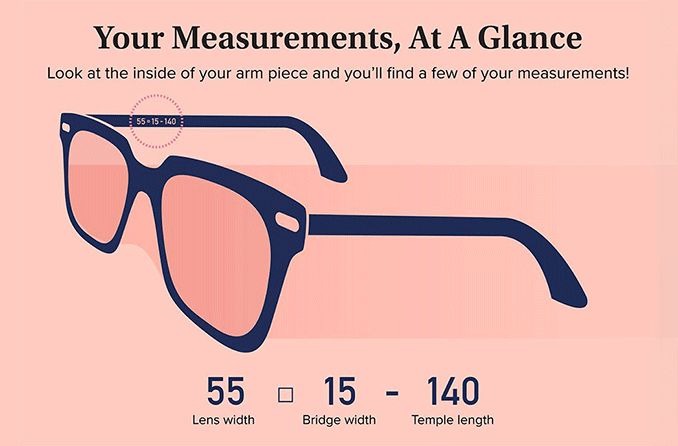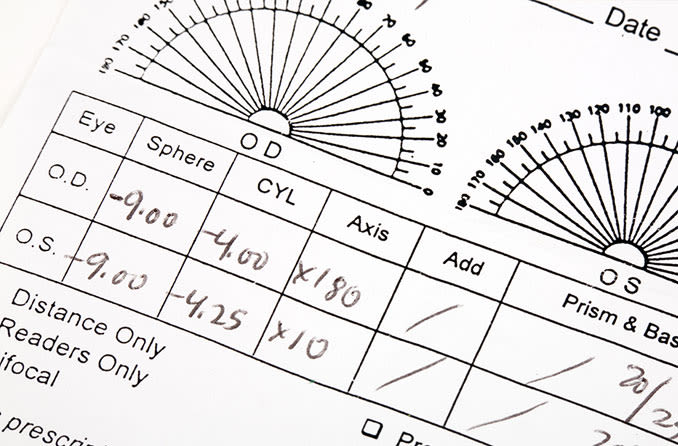How can I find my frame size?
If you have a pair of glasses that fit you well, you’re already halfway done! If you take a look on the inside of your arm pieces, you’ll see a few numbers separated by squares or dashes. Otherwise, you might find two numbers on the bridge of your frames.
Here’s what those numbers mean:
The first number is lens width. It will probably be between 40 and 60 mm and is usually followed by a square symbol.
The second number is bridge width. It will likely be between 14 and 24 mm.
The third number is temple length. It’s probably between 120 and 150 mm and usually ends in a zero or five.
If there’s a fourth number listed, it’s your lens height. This is likely between 32 and 38 mm.
What’s my lens width?

Lens width is the width of one of your lenses in millimeters, from one side to the other. You might hear this called eye size.
This is the most important measurement to make sure your frames fit your eyes. When measuring this with a metric tape measure, make sure you just measure the lenses -- not the frames.
What’s my bridge width?

Bridge width is the distance between your two lenses, measured from the innermost point on each lens. Finding your proper bridge width will make sure your sunglasses or eyeglasses rest comfortably on the bridge of your nose.
What’s my temple length?
Temple length is the length of your glasses’ arm pieces. It’s the distance between the bend of the arm, all the way to where it meets the frame. While the length is probably between 120 and 150 mm, there are some common industry standards: 135, 140, 145 and 150 mm.

If you find yourself getting frequent headaches, it might mean your temples are too tight. The arms shouldn’t sit uncomfortably right against the back of your ears, but you don’t want any wiggle room, either.
If two arms of the same length don’t fit quite the same, your ears might not be perfectly symmetrical. That’s OK! You can get arms of slightly different lengths to adjust -- that’s why your temple length might not end in zero or five.
What’s my lens height?
Lens height is the distance between the lowest point on your lens to the top of the frame above it. This number can be influenced by the style of your glasses, but it can be important when figuring out what kind of bifocals or progressive lenses you need.
Ultimately, you don’t need to concern yourself with your lens height unless you need those two styles of glasses. The most important thing is that the bottom of your frames shouldn’t rub against your cheek.
What else should I measure?
One more easy measurement to calculate is your frame width. This is the distance between the ends of your frames, including hinges. This number can be handy so you know if your frames are too narrow or too wide for your face.

You can also measure your pupillary distance. This is an especially important number to know when getting fitted for progressive lenses and can save you a lot of eye strain.
When you know your measurements, you can make sure your next pair of glasses fits great.













